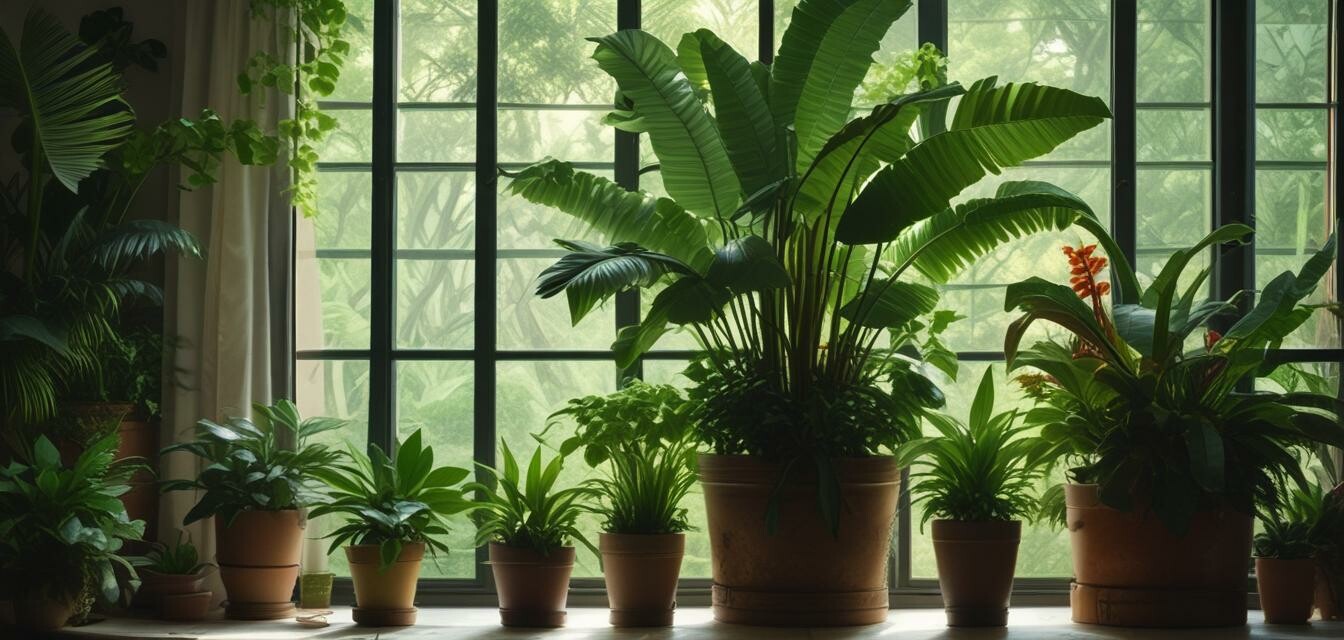
How to Maintain Optimal Humidity for Tropical Houseplants
Key Takeaways
- Tropical houseplants thrive in humidity levels of 60-80%.
- Methods to increase humidity include using trays, humidifiers, and grouping plants.
- Regular monitoring is essential to keep humidity levels optimal.
- Plants such as ferns and orchids particularly benefit from high humidity.
Tropical houseplants bring a wonderful touch of nature into your home, but they have specific moisture requirements to thrive and maintain their lush appearance. In this guide, we will explore various techniques for creating and maintaining the ideal humidity levels for your tropical plants.
Why Humidity Matters for Tropical Plants
Tropical plants originate from humid environments where moisture is abundant. Here’s a closer look at why humidity is vital for their growth:
- Water Absorption: High humidity helps plants absorb moisture through their leaves.
- Healthy Growth: Humidity supports lush foliage and vibrant flowers.
- Pest Prevention: Optimal humidity levels can reduce the likelihood of pest infestations.
Ideal Humidity Levels for Tropical House Plants
For most tropical houseplants, humidity levels between 60% and 80% are ideal. It’s essential to monitor humidity levels, especially during dry seasons.
| Plant Type | Ideal Humidity Level | Examples |
|---|---|---|
| Ferns | 60-80% | Boston Fern, Maidenhair Fern |
| Orchids | 50-70% | Cattleya, Phalaenopsis |
| Tropical Foliage Plants | 65-80% | Monstera, Peace Lily |
Methods to Increase Humidity
There are several ways to enhance the humidity levels in your home environment for the benefit of your tropical houseplants:
1. Use Humidity Trays
Place a shallow tray filled with water and pebbles beneath your plants. As the water evaporates, it increases humidity around the plants.
2. Group Your Plants Together
Grouping plants creates a microenvironment where humidity levels are higher due to moisture released by the plants themselves.
3. Invest in a Humidifier
A humidifier can maintain consistent humidity levels, especially beneficial during dry winter months. Ensure to position it in a way that disperses moisture evenly.
4. Misting Your Plants
Lightly misting your plants can temporarily increase humidity; however, avoid over-misting as it may lead to mold growth.
5. Consider Plant Choice
Some houseplants naturally prefer higher humidity. Consider including plants that thrive in lower humidity to create balance while maintaining optimal levels for tropical plants.
Monitoring Humidity Levels
To keep a close eye on humidity levels in your home, consider the following options:
- Hygrometers: Simple devices that measure the humidity in the air. Place one near your plants for accurate readings.
- Weather Apps: Many smartphone apps provide humidity levels; use them to plan plant care activities accordingly.
- Visual Cues: Observe your plants regularly; wilting, yellowing leaves, or brown tips can indicate low humidity.
Common Signs of Low Humidity
Recognizing the signs of low humidity can help you adjust your care routine. Look out for:
- Brown leaf edges or tips
- Leaves curling or dropping
- Frequent pest infestations
Conclusion
Creating and maintaining the optimal humidity levels for your tropical houseplants is essential for their health and vitality. By implementing simple strategies, you can ensure your indoor garden thrives and remains an uplifting part of your home. For more houseplant care tips, check out our care tips section, and explore more about air-purifying plants or rare houseplants to enrich your collection.
Pros
- Increased plant health and growth
- Aesthetic appeal with lush greenery
- Reduction in dry air impact on indoor environments
Cons
- Potential for mold growth if over-humidified
- Requires consistent monitoring and adjustments
- Initial setup costs for humidifiers or trays

